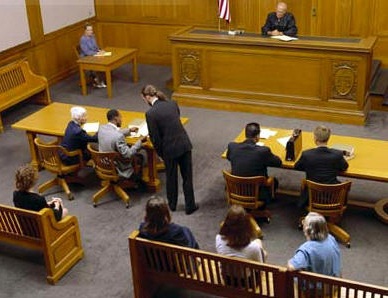 Lawyers in estate planning know the term “dead hand” to refer to efforts that living persons make to control property after they pass away. And while the term itself can cause an unpleasant mental image, it is the idea behind it, a.k.a. the “settlor’s intent,” that has created serious difficulties with millions of beneficiaries over the years. That is because for centuries courts have been required to enforce the original intent of the drafter of a will or trust to the utmost extent when interpreting such a document’s provisions. But much of this history has been turned upside down with the enactment of the Uniform Trust Code in Massachusetts. Instead, it seems now that the trust beneficiaries are in the driver seat.
Lawyers in estate planning know the term “dead hand” to refer to efforts that living persons make to control property after they pass away. And while the term itself can cause an unpleasant mental image, it is the idea behind it, a.k.a. the “settlor’s intent,” that has created serious difficulties with millions of beneficiaries over the years. That is because for centuries courts have been required to enforce the original intent of the drafter of a will or trust to the utmost extent when interpreting such a document’s provisions. But much of this history has been turned upside down with the enactment of the Uniform Trust Code in Massachusetts. Instead, it seems now that the trust beneficiaries are in the driver seat.
Protecting the Massachusetts Trust under the New MUTC
Since this article covers how to terminate trusts, it makes sense to identify what steps the settlor (creator of the trust) still can take in order to protect trust provisions from attack. And that centers mainly on the language featured throughout the Massachusetts UTC statutes of “material purpose.” In the past, while many estate planning attorneys did advocate that settlors identify a trust purpose, those provisions in trusts had no actual legal effect. They were used to help courts and trustees interpret the settlor’s desires, but there were no laws calling for these provisions. Now, however, as we’ve been discussing, the laws do call for language regarding a purpose.
But the inclusion of this concept of a “material purpose” doesn’t quite rise to the importance that a “settlor’s intent” once had. Instead, the term is merely used as a basis for all kinds of actions taken by Massachusetts trust beneficiaries; An agreement or petition to contest a trust, to modify a trust, or to terminate a trust must refer in some way to the trust’s material purpose. Many times, as in situations where no purpose is listed, the purpose might merely be “to hold property for the beneficiaries.”
Terminating or Modifying a Massachusetts Trust outside the Courtroom
 A key provision to the new Massachusetts Trust Code pertains to common fact that after a settlor has passed away, nobody except the beneficiaries has any interest in what happens to trust property. Because trusts are for the most part private documents, and not part of any public record, the beneficiaries of a trust are usually the only persons aware of trust property. So, in lawyers’ offices throughout the United States, trusts of all kinds were “illegally” terminated and liquidated by consent of all beneficiaries. The new Uniform Trust Code provision merely acknowledges that fact, and allows for a “non-judicial settlement agreement.”
A key provision to the new Massachusetts Trust Code pertains to common fact that after a settlor has passed away, nobody except the beneficiaries has any interest in what happens to trust property. Because trusts are for the most part private documents, and not part of any public record, the beneficiaries of a trust are usually the only persons aware of trust property. So, in lawyers’ offices throughout the United States, trusts of all kinds were “illegally” terminated and liquidated by consent of all beneficiaries. The new Uniform Trust Code provision merely acknowledges that fact, and allows for a “non-judicial settlement agreement.”
Still, such agreements are only valid to the extent that they do not violate a “material purpose,” whatever that may be. And they are only binding upon the interested parties that have been given notice to the agreement. Massachusetts Courts, still having jurisdiction over such agreements, can therefore be used to challenge a trust that was illegally or deceptively changed or eliminated.
But from a drafting perspective, the new provisions will require that a settlor considers reasons why she intends to create a trust. Doing so with the help of a crafty Massachusetts estate planning attorney would enable her to write a material purpose into the trust that could survive one of these informal agreements.
Changing and Dissolving Massachusetts Trusts by Probate Court Approval
There are many instances where a non-judicial settlement agreement is not available to parties seeking modification or termination of a Massachusetts trust. Perhaps the most notable instance, especially for trusts created after the enactment of the UTC, is a modification or termination that would violate a “material purpose” (whenever one is clearly present). But another conflict might simply be that the beneficiaries cannot agree that the trust should be modified or terminated.
In any of these situations, a trustee or beneficiary may nevertheless bring an action to change or terminate the trust in a Massachusetts Superior or Probate Court. In fact, even if the beneficiaries do not agree to modify or terminate a trust AND doing so would violate a material purpose, the petitioners still could bring a successful action against it.
Example 1: The Kids Aren’t Alright
Richard created a trust to hold his stock portfolio, to benefit himself during his lifetime, and to his two children when he passed away. If all that Richard wanted was to avoid probate, he could have simply named the two children as co-beneficiaries. In that scenario they would each receive an equal share upon his death.
But even though both children were over 18 when Richard created the trust, he observed that the two of them had very poor budgeting skills. Richard did not think that these were the type of spending habits that they would soon grow out of. Because of this, his attorney advised that he draft a “spendthrift trust.” In doing so, Richard’s attorney took special care to provide that the spendthrift clause would be interpreted by a court to be a “material purpose.”
When Richard would eventually pass away, any property that he transferred or willed into the trust would be subject to those spendthrift provisions, limiting the risk of the trust being used on frivolous expenses. If his children wanted to terminate the trust, they would not be able to do so by a non-judicial agreement. Instead, a petition would need to be filed with the Massachusetts Probate Court.
Example 2: Sibling Rivalry

Mary placed her residence, the family home in Barnstable, in a trust to be kept for the benefit of her three daughters. The trust directed that the daughters would have an equal interest in the home for the rest of their lives, and that after the last of them passed away, the house would pass in equal shares to the three daughters’ heirs.
Mary’s goal in drafting this trust was apparently to keep the home within the family for as long as possible. But she probably did not realize what was likely to happen when she died. Mary’s youngest daughter, with whom she lived until her death, remained living in the home afterwards as well. But Mary’s middle daughter was living across the country in California, and moreover was drowning in credit card debt. The oldest daughter, meanwhile, was married, living comfortably and needed neither a place to live nor money.
Under the old code, Mary’s middle daughter would have a long battle ahead of her in order to either force the sale of the house, or else compel the youngest & oldest daughters to buy her out. The court would focus on the settlor’s intent of the home as a crucial point in the proceedings. But with the new Uniform Trust Code, Mary’s middle daughter is able to simply file a complaint, with a strong likelihood of success. So long as all beneficiaries’ interests were protected under the proposed trust termination, the probate court will allow it.
Afterthoughts – Changes in Massachusetts Probate Practice
The Uniform Trust Code has not received nearly the amount of attention that the Uniform Probate Code first generated when enacted in Massachusetts. Perhaps the courts and attorneys are simply still trying to cope with the earlier changes. But these changes are in many ways a lot more significant, so that estate planning attorneys should be making very important modifications to the way they draft trusts from here on out.
If you’re looking to create a trust in the near future, make sure your attorney is among the informed. After reading this article you should be able to figure out an attorney’s UTC awareness simply by asking “What changes have you made to your trusts since the new UTC?”



